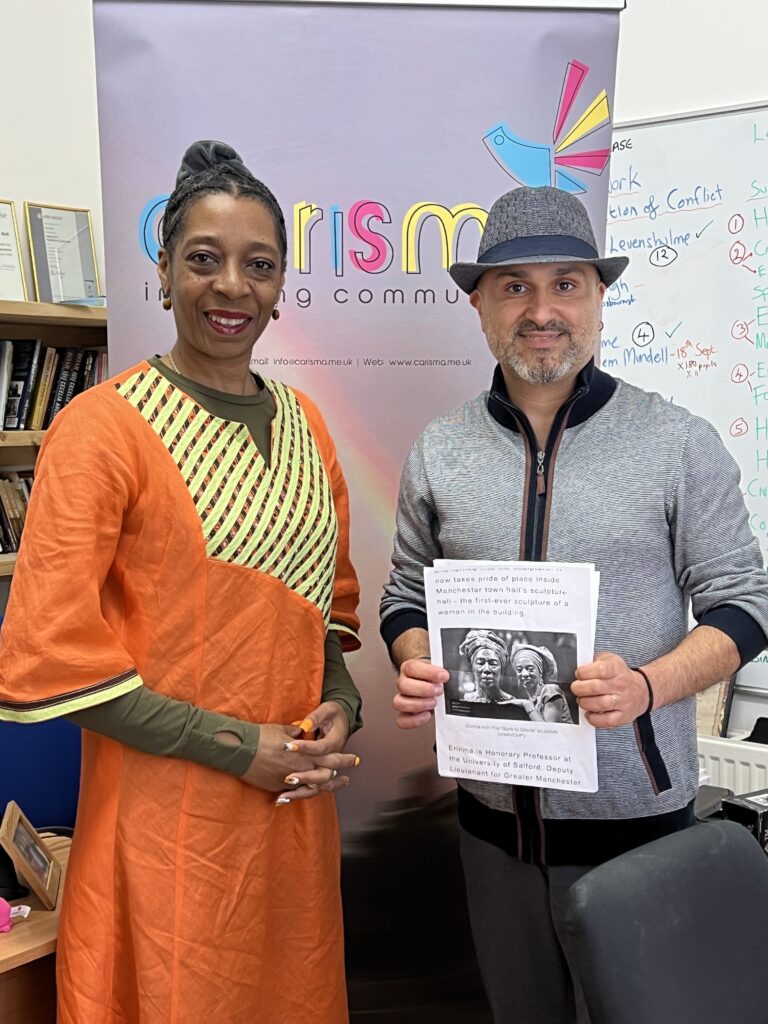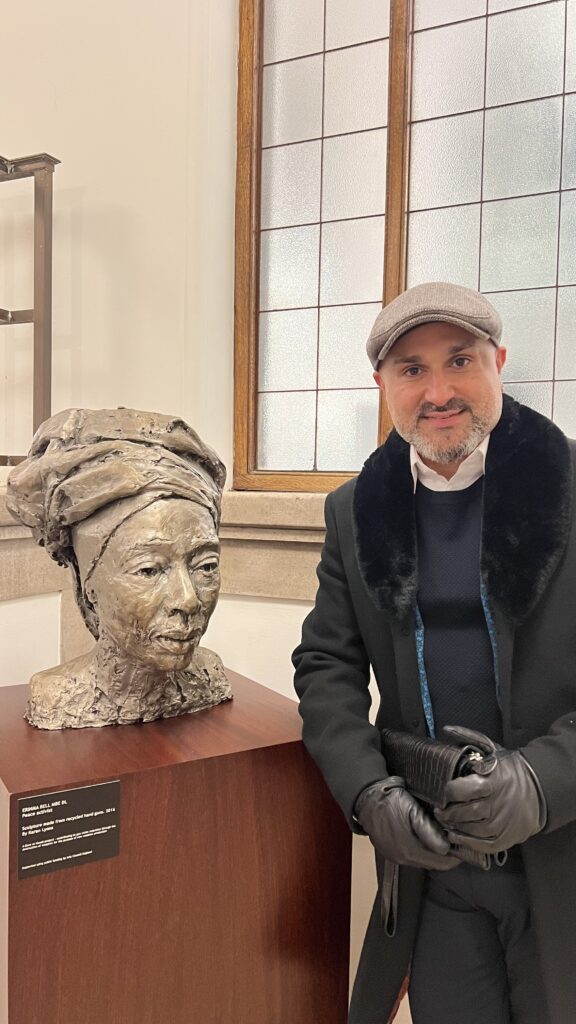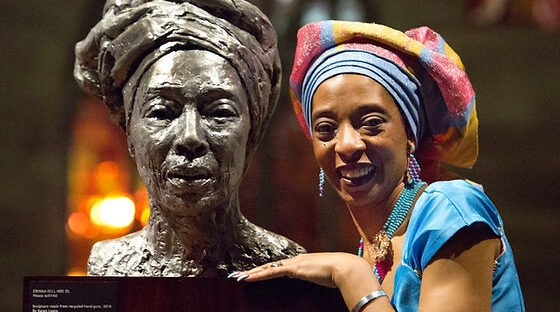Professor Erinma Bell: turning bullets into bronze — a legacy of peace for Manchester
- Featured image credit: Professor Erinma Bell
In a city shaped by industrial heritage and multicultural vibrance, one woman stands — quite literally — as a symbol of resilience, transformation, and hope.
Professor Erinma Bell, peace activist and social reformer, has made history as the first woman in 150 years to have a statue erected in Manchester, the first Black woman to be honoured in this way.
But her story is not defined by bronze, it’s defined by bravery.
Bell’s activism was born out of tragedy. In 2002, she and her husband Raymond witnessed a close friend being shot in front of them.
“Gun crime became a reality to us that night,” she says. “We were never treated as victims, we were treated as perpetrators. That’s when we said, enough is enough.”
From that moment, Bell committed herself to transforming her community. She and her husband founded CARISMA — Community Alliance for Renewal, Inner South Manchester Area — a grassroots initiative aimed at tackling the gun and gang violence that had gripped parts of the city in the late 1990s and early 2000s.
“We weren’t trying to be heroes,” Bell recalls. “We were already doing the work. It wasn’t until someone offered us funding that we realised we needed a name, a bank account — and from there CARISMA was born.”

Professor Erinma Bell and Faraz Arian | Credit: Faraz Arian
Their work paid off. Through tireless community building, education and advocacy, gun crime in Manchester dropped dramatically. Bell believes the key to this success lies not just in enforcement, but in empathy.
“Community cohesion is the heart of it,” she explains. “It’s about people coming together — regardless of background, race, religion, or identity — to solve problems that affect us all.”
Bell’s statue, which stands proudly outside Manchester Town Hall, carries even more meaning. Crafted from 50 decommissioned firearms, it is both a memorial and a message. “The statue is made of recycled gun metal — it’s a tribute to my work and a reminder that something as destructive as a gun can be transformed into a symbol of hope and strength.”
She adds with a smile: “I’m still alive. I’ve taken selfies with my own statue.”
More than a monument, Bell sees it as a living legacy — particularly for the next generation. “Young people are fascinated when they hear about it. They realize that real change is possible, and that they can be part of it. That’s the legacy I want to leave.”
Her insights into media bias are equally powerful. Growing up in Moss Side, Bell remembers how the area was demonised in the press.
“They used to compare Moss Side to Beirut. But we lived there. It was never like that. The media and even the government used to blame young people for gun crime — especially young Black boys. But we asked: how does a gun from the Bosnia war end up in the hands of a 14-year-old in Manchester? That’s not a street-level issue, that’s a border issue.”

NQ reporter Faraz Arian with a bust of Erinma Bell | Credit: Faraz Arian
Bell’s work continues today through education, peace-building, and her role as a professor of conflict resolution. She advocates for what she calls “social capital” — the fabric of relationships that hold communities together. “We need bonding within groups, bridging across differences, and linking people to power. And above all, we need identity — a sense of belonging and pride in who we are.”
When asked what more can be done to strengthen community cohesion, her answer is clear and inspiring: “We must keep going. We must keep celebrating our differences, inviting others in, building bridges, and telling each other’s stories. That’s how we create peace that lasts.”
Professor Bell is proof that one voice — rooted in community, shaped by experience, and driven by love — can change an entire city.
Her statue may be made of metal, but her message is made of something far stronger: humanity.


